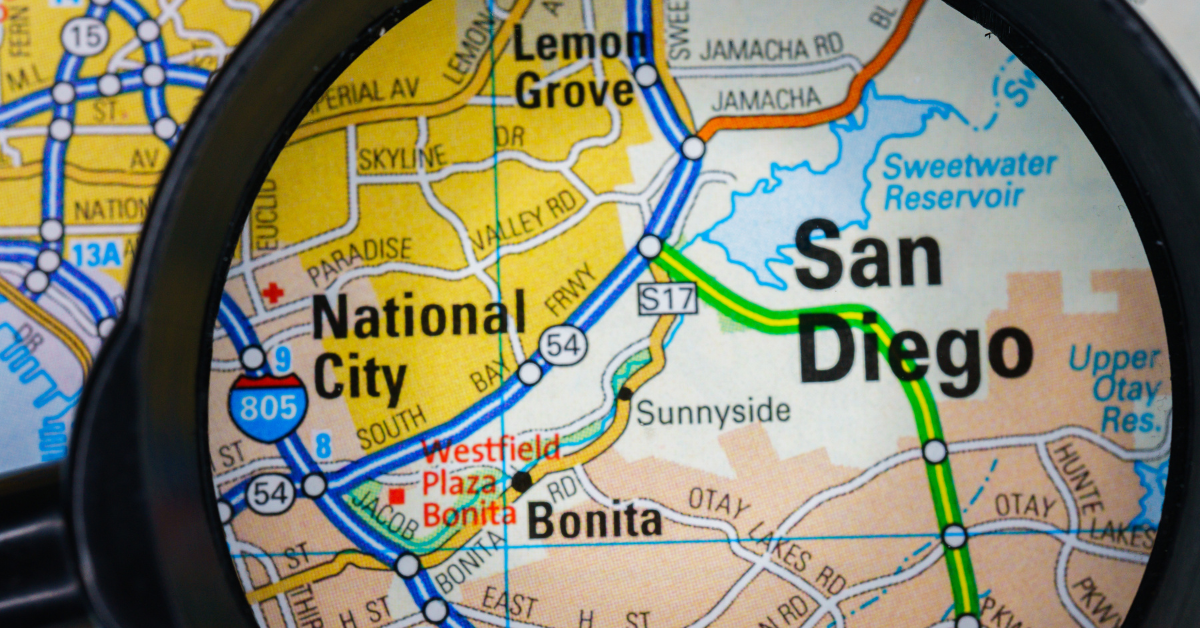In Japanese, foreign city names are usually written in katakana, but San Diego has also appeared in unusual kanji forms such as “聖何塞” and “三提.” These forms are no longer in common use, yet they reveal how Japanese adapted foreign sounds and meanings through historical translation practices. This article explains why multiple versions exist and what they mean.
- Why San Diego Has No Fixed Kanji Representation
- The Meaning and Origin of “聖何塞 (Seikakō)”
- The Meaning and Origin of “三提 (Santei)”
- Why Katakana “サンディエゴ” Became Standard
- Different Forms of San Diego
- Common Patterns of Foreign Place Name Transcriptions
- Influence of Meiji-era Kanji Practices
- Key Points for Foreign Learners
- Conclusion
Why San Diego Has No Fixed Kanji Representation
When expressing foreign place names in Japanese, official kanji forms do not exist; katakana is the standard. San Diego is no exception, and when written in kanji, the characters serve only as phonetic substitutions.
This practice emerged in the late 19th and early 20th centuries when newspapers and translations favored kanji-heavy text for uniformity. Over time, however, katakana became the norm because it better reflected pronunciation and was easier for readers to understand.
Thus, the absence of an official kanji form for San Diego is part of a natural linguistic shift toward katakana in modern Japanese.
The Meaning and Origin of “聖何塞 (Seikakō)”
The form “聖何塞” derives from the Chinese transliteration “聖迭戈”.
- 聖 = Saint (holy figure)
- 何塞 = A phonetic approximation of “Diego”
This style of writing gave the name a dignified, classical feel, especially in Chinese-style Japanese texts. Although it is now obsolete, it is an important example of how foreign place names entered Japanese through Chinese cultural influence.
The Meaning and Origin of “三提 (Santei)”
The form “三提” is a phonetic transcription used in maps and books of the Meiji era. Unlike “聖何塞,” it did not attempt to preserve meaning but focused only on sound.
- 三 = San
- 提 = Die
The “Ego” part was dropped, leaving a shorter version. While it looks odd today, it was once considered practical for space-limited publications such as maps.
This shows how Japanese often selected simple kanji characters to mimic foreign sounds, even if the meaning was irrelevant.
Why Katakana “サンディエゴ” Became Standard
After World War II, Japanese orthography was standardized, and katakana became the official method of writing foreign place names.
The reasons include:
- Closer to the original pronunciation
- Consistency in education and publishing
- Easier for all readers to understand
As a result, “サンディエゴ” in katakana is now used in newspapers, maps, textbooks, and tourist guides.
Different Forms of San Diego
| Form | Reading | Origin and Meaning | Usage Examples |
|---|---|---|---|
| 聖何塞 | Seikakō | Derived from Chinese; implies “Saint Diego” | Classical translations, old newspapers |
| 三提 | Santei | Simplified phonetic kanji transcription | Meiji-era maps and translations |
| サンディエゴ | San Diego | Standard katakana transcription | Modern textbooks, news, tourism |
Common Patterns of Foreign Place Name Transcriptions
| Pattern | Example | Features |
|---|---|---|
| Meaning-based | 聖何塞 (San Diego) | Uses kanji to preserve the “Saint” meaning |
| Sound-based | 三提 (San Diego) | Kanji chosen only for phonetic similarity |
| Katakana-based | サンフランシスコ, ニューヨーク | Prioritizes accurate pronunciation and uniformity |
Influence of Meiji-era Kanji Practices
| Aspect | Explanation |
|---|---|
| Education | Kanji-heavy curricula encouraged kanji place names |
| Publishing culture | Newspapers favored kanji for visual consistency |
| Modern influence | Survives in old maps and documents as research material |
Key Points for Foreign Learners
| Perspective | Explanation |
|---|---|
| Current standard | San Diego is written in katakana in modern Japanese |
| Role of kanji forms | Historical products of translation culture; no practical role today |
| Avoiding confusion | Kanji may look meaningful but often serve only as phonetic substitutes |
Conclusion
San Diego has no official kanji representation, and forms such as “聖何塞” and “三提” are merely remnants of historical translation practices. Today, the only standard form is the katakana “サンディエゴ”.
Nevertheless, knowing these old variants helps us understand how Japanese integrated foreign languages through both sound and meaning. For foreigners, this is not just about spelling differences—it is also a window into the cultural and linguistic history of Japan.






